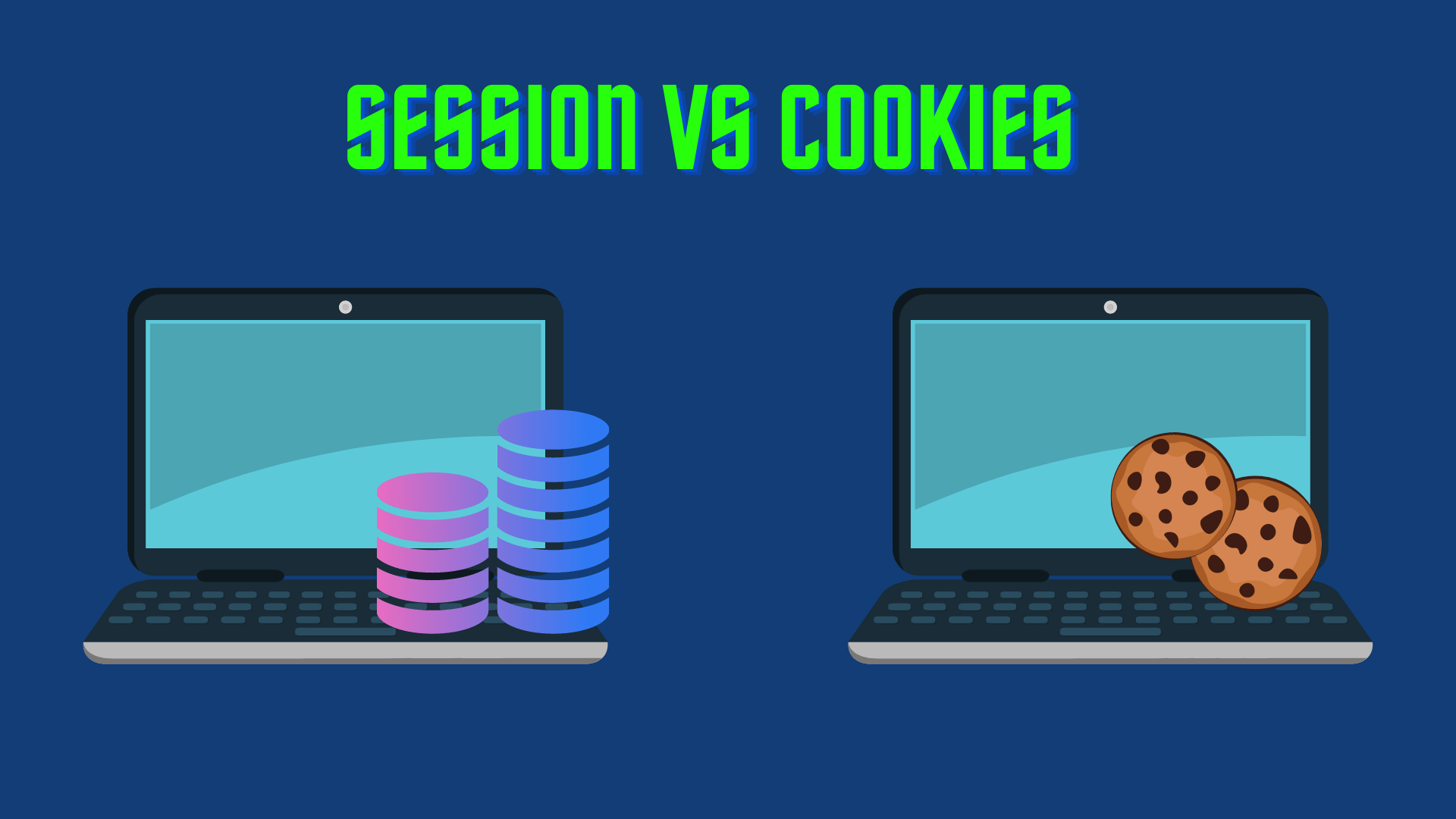Cookies vs. Sessions: A Comprehensive Comparison with Practical Examples
 Ahmed Raza
Ahmed Raza
In the realm of web development, cookies and sessions are essential mechanisms for storing user data and maintaining state across HTTP requests, which is inherently stateless. Understanding the differences between cookies and sessions, as well as their appropriate use cases, is crucial for building secure and efficient web applications. This article delves into the nuances of cookies and sessions, comparing their functionalities, benefits, and limitations through practical examples.
What Are Cookies?
Cookies are small text files stored on a user’s browser by a web server. They are sent along with every HTTP request to the same server, enabling persistent data storage across user sessions.
Key Features of Cookies
Client-Side Storage: Cookies are stored on the client’s machine.
Limited Storage Capacity: Typically, cookies can store up to 4KB of data.
Duration: Cookies can be session-based (deleted after the browser is closed) or persistent (remain until their expiration date).
Security Concerns: Vulnerable to attacks such as cross-site scripting (XSS) if not handled properly.
Practical Example
Imagine a user logs into an e-commerce site and adds items to their cart. Cookies can store the following:
{
"userId": "12345",
"cart": ["item1", "item2", "item3"]
}
When the user revisits the site later, the cookie enables the server to identify the user and retrieve their cart.
What Are Sessions?
Sessions, on the other hand, are server-side constructs used to store user-specific data. A unique session ID is generated for each user and is typically stored in a cookie on the client’s browser.
Key Features of Sessions
Server-Side Storage: Data is stored securely on the server.
Larger Data Capacity: Can handle substantial amounts of data compared to cookies.
Temporary Storage: Sessions expire when the user logs out or after a defined period of inactivity.
Better Security: Less vulnerable to client-side attacks since data isn’t stored on the client.
Practical Example
For the same e-commerce scenario, a session might store user data like this:
{
"userId": "12345",
"cart": ["item1", "item2", "item3"],
"loginStatus": True
}
The session ID is sent via a cookie or query parameter, allowing the server to identify and retrieve the associated session data.
Cookies vs. Sessions: A Detailed Comparison
| Feature | Cookies | Sessions |
| Storage Location | Stored on the client’s browser. | Stored on the server. |
| Data Capacity | Limited to 4KB. | Virtually unlimited (depends on server). |
| Security | Vulnerable to XSS and theft if unsecured. | More secure; not exposed to the client. |
| Lifetime | Can persist after browser closure. | Expires when the user logs out or times out. |
| Use Cases | Persistent data like preferences. | Sensitive data like authentication. |
Use Cases and Practical Scenarios
Scenario 1: Remembering User Preferences
Solution: Use cookies.
Example: A website stores a user’s language preference using a cookie:
{ "language": "en-US" }The server reads this cookie on subsequent visits to serve content in the preferred language.
Scenario 2: Authentication
Solution: Use sessions.
Example: Upon login, the server creates a session to store user credentials and permissions:
{ "userId": "12345", "role": "admin" }The client receives a session ID in a cookie, enabling the server to verify the user on each request.
Scenario 3: Shopping Cart Data
Solution: Use both.
Cookies: Store non-sensitive cart data for a seamless experience across sessions.
Sessions: Store sensitive data (e.g., user authentication) securely on the server.
Best Practices
For Cookies
Use the
HttpOnlyflag to prevent JavaScript access.Set the
Secureflag to ensure cookies are transmitted over HTTPS.Regularly review expiration dates to avoid stale data.
For Sessions
Implement proper timeout mechanisms to minimize server load.
Use secure session ID generation algorithms to prevent session hijacking.
Encrypt sensitive session data stored on the server.
Conclusion
Both cookies and sessions are indispensable tools for web developers, each serving distinct purposes. Cookies are best suited for lightweight, non-sensitive client-side data, while sessions excel in managing sensitive server-side information. Leveraging the strengths of both technologies ensures a robust, user-friendly, and secure web application. By understanding when and how to use these tools, developers can create seamless experiences that cater to the dynamic needs of modern users.
Subscribe to my newsletter
Read articles from Ahmed Raza directly inside your inbox. Subscribe to the newsletter, and don't miss out.
Written by

Ahmed Raza
Ahmed Raza
Ahmed Raza is a versatile full-stack developer with extensive experience in building APIs through both REST and GraphQL. Skilled in Golang, he uses gqlgen to create optimized GraphQL APIs, alongside Redis for effective caching and data management. Ahmed is proficient in a wide range of technologies, including YAML, SQL, and MongoDB for data handling, as well as JavaScript, HTML, and CSS for front-end development. His technical toolkit also includes Node.js, React, Java, C, and C++, enabling him to develop comprehensive, scalable applications. Ahmed's well-rounded expertise allows him to craft high-performance solutions that address diverse and complex application needs.